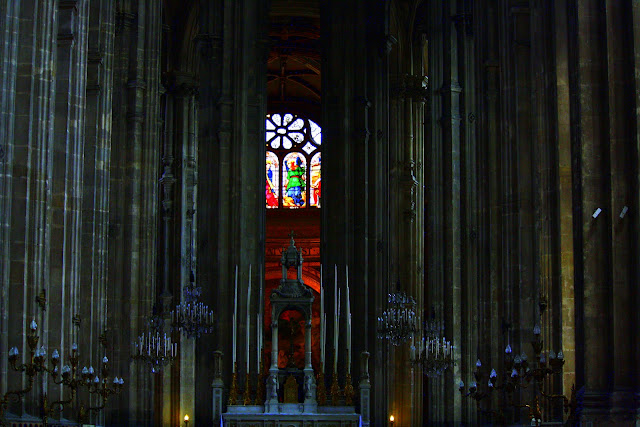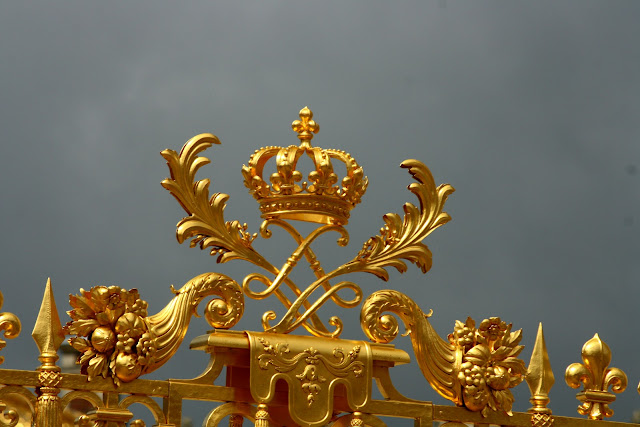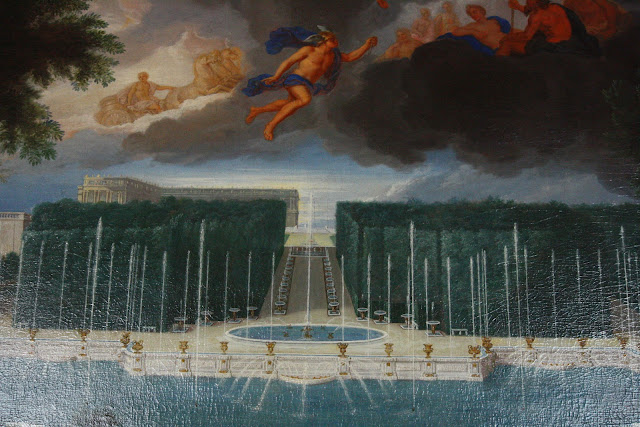Was the American revolution inspired by Versailles? A few of the founding fathers spent time in France, and it's likely they at least visited Versailles. Were they disgusted by the way a royal family squandered the wealth of its people? Were they inspired to built a nation in reaction to France (and England's) feudal traditions?
Versailles, and the Louvre, are among the most impressive architectural and artistic monuments in the world. The scale and execution are breathtaking. Every room is packed with masterpieces by the era's finest artists - examples of the most conspicuous form of consumption at the time.
But with a little reflection the whole show is more than a little off-putting. Here is a nominally Christian ruler of a nation, taxing his peasants more and more to build bigger and bigger monuments to himself. Stop #111: Fresco of King Louis portrayed as Mars, conquering his enemies. Stop #19: Oil painting of King Louis portrayed as Mercury, advancing science. Stop #45: An enormous canal built in his backyard so King Louis could watch mock naval battles. King Louis built the ultimate crib.
There are few places that can compare. There are the Pyramids, built thousands of years before on the backs on slaves. There are the thousands of terracotta warriors of China, commissioned by a Chinese emperor to fight wars in the afterlife, whose creators were buried along with the warriors to ensure that no successor could surpass his glory. There are the Incas, whose rulers built elaborate palaces, covered in gold and gems to glorify themselves. Those are also impressive.
But in defense of those other emperors, they did rule in the context of state religions that placed them at the center of the universe. Imagine that for a second. Louis, well, he was just another king ruling by divine rate among the many nation-states of Europe. The root cause of his artistic achievements was an insatiable ego. He did the opposite of what a ruler should do - rather than use his power to benefit his subjects, he used his subjects to glorify himself. To really grasp Versailles you have to place it in the context of a poverty stricken country. Per capita income in 17th century France was less than a dollar a day. Imagine Versailles in the Republic of Congo. Imagine the character of a person who could extract those kind of sacrifices from his people.
So, despite the beauty, my personal experience as Versailles was a melancholy one. Let's raise a toast to megalomania and teach our children that it's national culture.































































